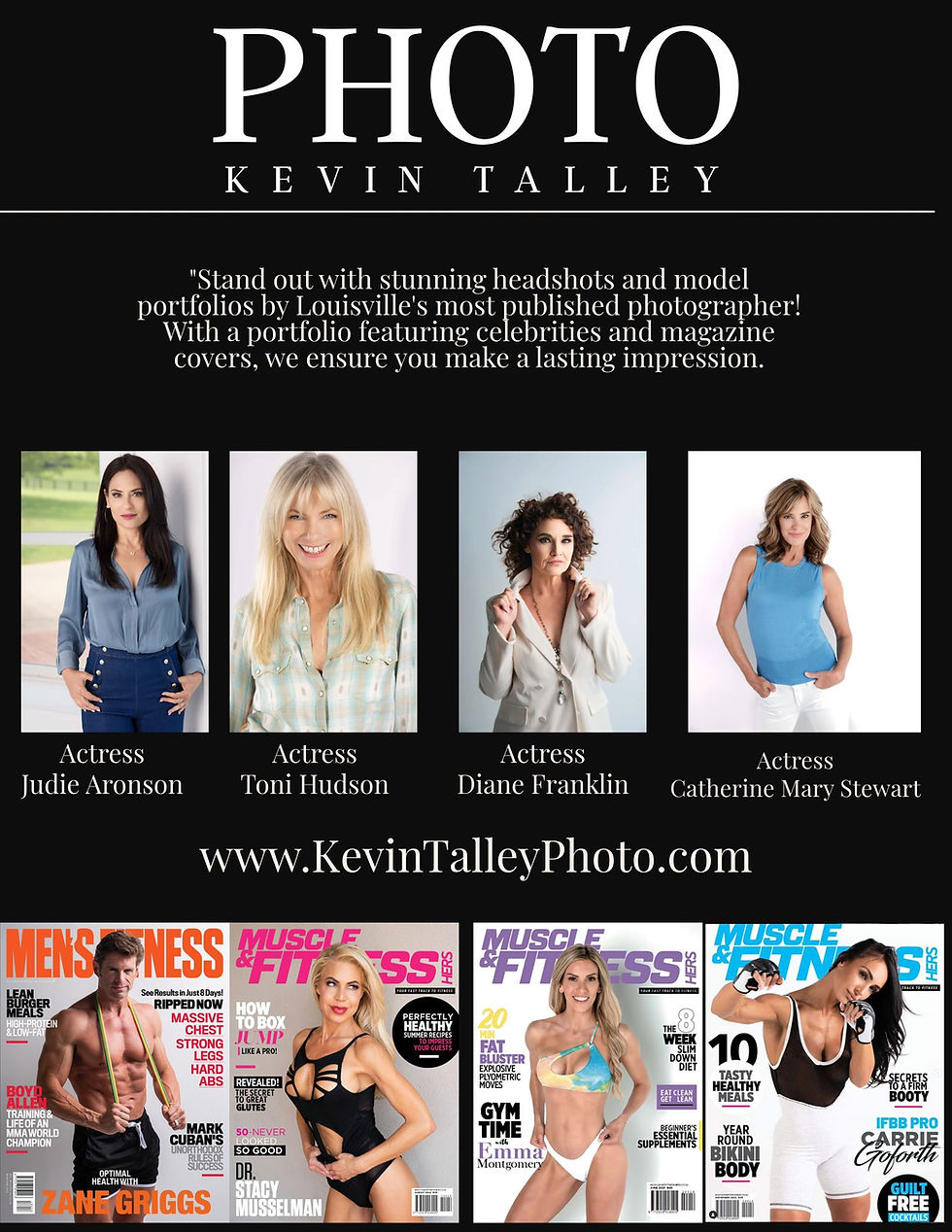Advanced Uses of Aperture in Photography: Taking Control of Your Shots
- Kevin Talley
- Oct 23, 2024
- 3 min read
Aperture is one of the most critical components of photography, influencing not just exposure but also depth of field and overall image quality. While many photographers start with the basics of aperture settings (f-stops) to control brightness, there are advanced applications that can take your photography to the next level. In this blog, we will explore some of these advanced uses of aperture, offering insights that can help you capture stunning images with creative flair.
## Understanding Aperture
Before delving into advanced applica

tions, it's essential to understand what aperture is. Simply put, aperture refers to the size of the opening in a lens through which light passes. It is measured in f-stops (e.g., f/2.8, f/4, f/8), where a smaller f-stop number indicates a larger opening, allowing more light to enter the camera, and a larger f-stop number corresponds to a smaller opening, letting in less light.
Aperture not only affects exposure but also plays a significant role in depth of field (DOF). The DOF determines how much of the scene (foreground, middle ground, and background) is in focus. By mastering the use of aperture, photographers can create captivating images that convey specific moods or highlight subjects effectively.
## 1. Controlling Depth of Field
Perhaps the most well-known use of aperture is its effect on depth of field. In portrait photography, a shallow depth of field can separate the subject from the background, creating a pleasing bokeh effect that draws the viewer's attention. To achieve this, use a wide aperture setting (like f/1.8 or f/2.8) to blur out distracting backgrounds while keeping the subject sharp.
Conversely, in landscape photography, you generally want a larger depth of field to keep more of the scene in focus. This can be achieved by using a smaller aperture (like f/11 or f/16), which helps maintain detail from the foreground to the distant horizon. Experimenting with aperture settings in various shooting scenarios can drastically alter the impact of your photographs.
## 2. Creating Special Effects
Aperture can also be used to create intentional effects in your images. Here are a few techniques you can explore:
### Starbursts
When photographing bright light sources, such as the sun or street lamps, you can create a beautiful starburst effect by using a smaller aperture (around f/16 or f/22). This effect occurs because of the diffraction of light passing through the small aperture blades, producing rays that radiate from the light source.
### Focus Stacking
Focus stacking is a technique that involves taking multiple images of the same subject at different focus distances and blending them in post-processing. For this, a smaller aperture is often necessary to increase the depth of field sufficiently for each shot. This technique is especially useful in macro photography, where creating a complete focus throughout a subject can be challenging.
## 3. Adjusting for Lens Characteristics
Different lenses behave uniquely at various aperture settings. Understanding how your lens interacts with aperture can lead to improved image quality. For instance, many lenses have a "sweet spot," usually around f/8 to f/11, where they produce the sharpest images with the least distortion. Using a wider aperture may lead to softness, especially in the edges of the frame; conversely, too narrow an aperture can introduce diffraction, causing a loss of sharpness across the image.
## 4. Managing Exposure with Aperture
While you can control exposure using shutter speed and ISO settings, aperture also plays a vital role in achieving the desired exposure, particularly in fast-changing lighting conditions. In scenarios such as concert photography or indoor events, where light levels can fluctuate, you may need to adjust your aperture to prevent overexposed images.
Using aperture to maintain the correct exposure helps ensure you can capture the dynamic range within a scene without losing detail. Remember that adjusting your aperture affects depth of field, so be mindful of how it impacts your composition as well.
## 5. Creative Blending of Light and Shutter Speed
In more advanced photography techniques like long exposure, aperture can also be a creative tool. When shooting long exposures, not only do you need to adjust the shutter speed for the intended effect, but sometimes you may need to close down the aperture to maintain a proper exposure. This is particularly useful in landscape photography where you want to capture flowing water or moving clouds, creating a sense of motion while ensuring the rest of the image is adequately exposed.
## Conclusion
The use of aperture in photography goes far beyond simply adjusting light levels; it's a powerful tool that can define your creative vision. By mastering the advanced uses of aperture, you can enhance your ability to create stunning compositions, achieve professional-looking effects, and tell compelling stories through your photographs. So, grab your camera, experiment with various settings, and let your imagination lead the way. Happy shooting!



Comments